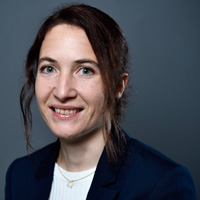Sapere Aude research leader grants for the Niels Bohr Institute
Three researchers from the Niels Bohr Institute, University of Copenhagen, have received Sapere Aude research leader grants from the Independent Research Fund. The beneficiaries of Sapere Aude grants are usually young scientists, and the grant gives them the opportunity to establish their own research teams and perform research on a high international level.
Three researchers from the Niels Bohr Institute, University of Copenhagen, have received Sapere Aude research leader grants from the Independent Research Fund. The beneficiaries of Sapere Aude grants are usually young scientists, and the grant gives them the opportunity to establish their own research teams and perform research on a high international level.
Christa Gall

Independent Research Fund Denmark
This comprehensive observational study of astrophysical transients, such as massive stars exploding as supernovae or other shortlived astronomical events (on the astronomical timescale), will transform our current views in many areas of astronomy. “I will address questions regarding the origin of cosmic dust and explore if supernovae are the long sought dust production factories in galaxies. By accounting for the intrinsic physical properties of a particular type of stellar explosion I will test if the accuracy of measuring cosmological parameters can be improved”, says Christa Gall. Brand-new transient surveys will also open up a new discovery space for rare and yet unknown transients and this project will characterize and elucidate their nature.
Irene Tamborra

Independent Research Fund Denmark
Among the most extreme events in our Universe, are the deaths of massive stars in violent supernova explosions. Others arise when two relatively close stars die and leave two neutron stars or a neutron star and a black hole. The binary system made by those objects further evolves giving rise to a compact binary merger. The mechanism behind those cosmic fireworks is full of mysteries, but compact sources are considered to be the main factories of all elements heavier than iron. An elementary particle, the neutrino, has a fundamental but yet to be unraveled role in compact sources. Through the development of novel methodologies, this project will shed light on the impact of neutrinos, and their conversions among different kinds, in the dynamics of compact sources and in the synthesis of new elements.
You Zhou

Independent Research Fund Denmark
In the early universe, up to about a microsecond after the Big Bang, a special state of matter called quark-gluon plasma (QGP) existed. By colliding heavy-ions at ultrarelativistic energies using the Large Hadron Collider (LHC) at CERN, we can recreate the early universe in a little "Big Bang” and study it under controlled conditions. The anisotropic flow technique is a central method, which allows studying fundamental properties of the produced QGP droplets. It reveals that the QGP behaves like a near perfect fluid. However, the evolution of the QGP is still completely unknown. “I am leading the current effort to unravel this fundamental puzzle. The proposed project will develop new sophisticated multi-particle analysis techniques and apply them to the most advanced LHC RUN3 data, in order to answer this fundamental question”, You Zhou says.
